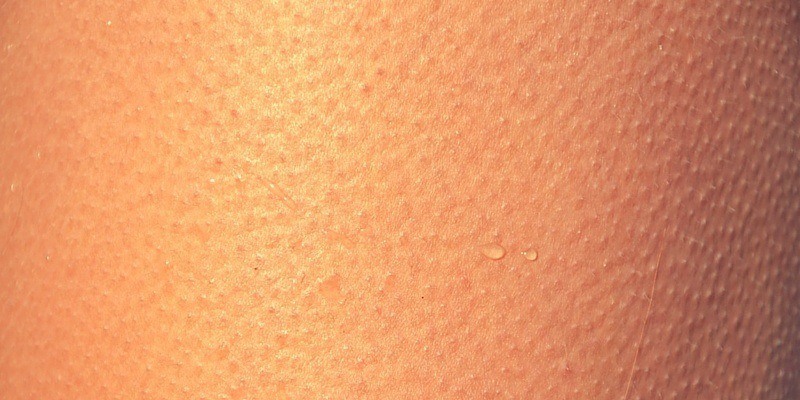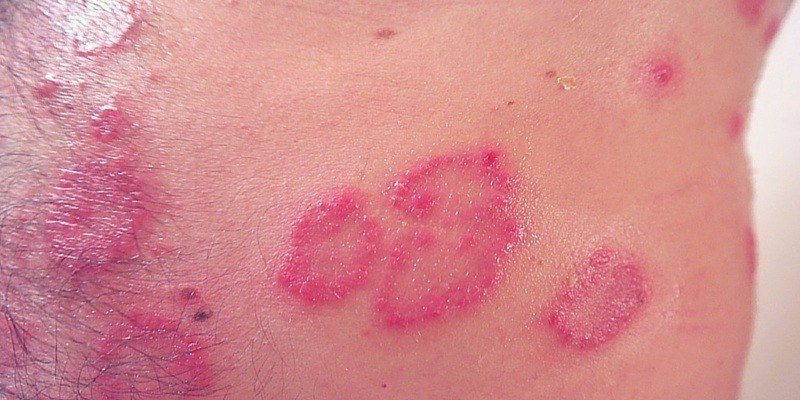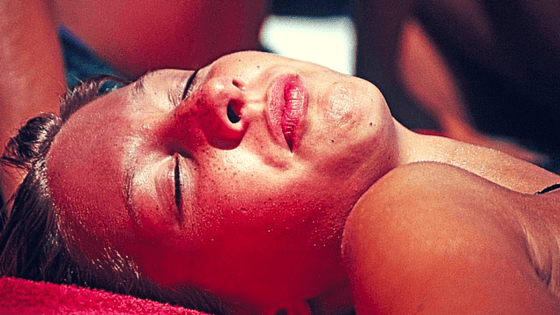Your mission to acquire clear, healthy skin begins with a solid skincare routine.
We’ve put together this super easy to follow guide outlining what a basic routine looks like for those attempting to improve the quality of their skin and need help putting together a routine that works.
We’ve simplified your skincare regimen to just 4-5 steps depending on your individual needs. This makes it very easy to begin without having to worry about hundreds of different products and unspoken rules.
But before we get into each step in detail we need to get you caught up and lay the foundation for proper skincare.
Before Starting A New Skincare Routine
When building a house it’s important to establish a proper foundation and lay the groundwork before worrying about the roof and what color walls to use. Otherwise you’re on shaky ground and will soon be disappointed in your new home.
The same is true of skincare. If you don’t have a proper foundation you’re making everything 100x harder for yourself.
Here are four things you need to know or do before starting your routine to make life easier:
#1 Identify Your Skin Type
There are four different types of skin: oily, dry, normal and combination. Knowing your skin type will help you put together a routine that suits your skin’s specific needs.
Each skin type has its nuances you need to come to understand in order to effectively care for it and its own set of pros and cons. We’ll further look into this in their respective skincare guides.
#2 Adding New Products Into Your Routine
While putting together a routine you will likely experiment with a few different products before settling on one as you discover how your skin reacts to different skincare ingredients.
The most important thing you can do here is to only introduce new products into your routine ONE at a time. That means if you decide you need a new cleanser you won’t also start using a new moisturizer without giving the cleanser a test run for a couple weeks.
The reason being is that if you happen to breakout or your skin gets irritated you now have NO idea which product is causing you the trouble.
Two weeks is a long enough time to test whether a skincare product plays nicely with your skin.
You can also do something called a patch test which is basically applying a small amount of product to a secluded area of your skin (say behind the ear) to check for any allergic reactions or inflammation. This can give you a rough idea of whether you can tolerate it but note that some people take days or even weeks before they notice any adverse reactions so this isn’t foolproof.
#3 Eating A Skin Healthy Diet
Proper nutrition and a healthy diet is the foundation of every great skincare routine!
We believe not even the best skincare products in the world will be able to completely make up for a shoddy diet. Feeding your body the nutrients and vitamins it needs to build that perfect skin you’re looking for is a prerequisite before you start worrying about what products to use.
In some cases you’ll find that by just changing your diet your skin problems either improve or go away altogether.
Here are some helpful skin related nutrition guides to check out afterwards:
Skin Nutrition: What To Eat (And Avoid) For Great Skin
10 Foods you Should Be Eating For Better Skin
How To Eat Your Way To Glowing Skin In Only 6-8 Weeks
#4 Understanding Product Branding
Skincare is a multi-billion dollar industry. There’s a lot of people out there that want to take your money in exchange for their products which may or may not actually work as intended. It’s a good idea to get educated on how these products are branded.
Realize that there is no significant difference between skincare products marketed towards men and women (except for the fragrances they use and the way they are advertised).
The differences between a women’s and men’s skin is minor enough to be negligible. The most significant being a slight pH difference. As long as the product is below a 6 on the pH scale both genders should be good. Only in commercials are they blown out of proportion.
Another thing to realize is that the buzzwords placed on the products themselves aren’t always trustworthy. Terms like “organic”, “natural”, and “non-comedogenic” are guidelines at best. They shouldn’t be trusted as much as what the ingredient list says in the back.
Learning what different skincare ingredients do is a process but will go a long way in saving you from headaches down the road.
Putting Together An Effective Skincare Routine
Whew! Okay now that we set the foundation we’re ready to discuss the individual steps of a basic skincare routine. Remember that you’ll do your routine twice a day in the AM and PM (morning and night).
Step 1: Cleanse
Cleansing will clear out your pores by removing gunk, excess oil, and leftover product that gets left behind and stuck in between them.
The whole point of using a cleanser is to get your skin to a clean slate. The other steps in your routine will work more effectively if your skin is cleared of the stuff we listed above.
Every skin type should cleanse at least once a day, preferably in the PM. Oily skin type in general need more cleansing than dry skin types and may do so as part of their morning routine however it’s highly recommend that you don’t cleanse more than twice a day no matter what type of skin you have because cleansers, especially harsher ones, will irritate and damage your skin in the long run.
The most important question to ask yourself regarding your cleanser is if your skin feels dry or tight after using it. If so whatever you’re using is too strong and you’ll probably want something gentler.
In general foam based cleansers tend to be the strongest. They should only ever be used by the oiliest of skin types. Foam cleansers create a lot of bubbles when mixed with water. This is due to their ingredients which likely contain harsh surfactants like sodium lauryl sulfate, sodium laureth sulfate, and ammonium lauryl sulfate — all known skin irritants.
Nearly every ingredient in the sulfate family is too strong to be used on skin especially more sensitive skin which is prone to irritation. Gel and cream based cleansers are much gentler as they often don’t contain these ingredients.
If you’d like to read more about sulfates and other known skin irritants check this guide out which will acquaint you with the ingredients.
And no… that bar of soap doesn’t count as a cleanser. Well technically it does but not an effective one. Read this article we wrote about the importance of pH in your skincare products to find out why. In short, too high on the scale and you destroy your skin’s lipid barrier (its natural defense against environmental toxins) and encourage acne causing bacteria to thrive.
Our preferred types of cleansers? Non foaming gel and cream based ones as well as cleansing oils which make use of something called the oil cleansing method (commonly abbreviated OCM) which fights oil with oil. The OCM uses oils like jojoba, mineral, sunflower, and castor to cleanse skin by dissolving the existing oil on your face.
The OCM can work for any skin type although acne prone skin has to be extra careful. Using the wrong type of oil will cause crazy breakouts. Not good.
Sidenote For Women: If you wear makeup, have leftover product from earlier in the day, or still have sunscreen on you’ll want to remove those before using your cleanser with makeup remover, petroleum jelly, or the oil cleansing method.
Step 2 (Optional): Exfoliate
Exfoliation comes after step 1 and is an optional step because it isn’t completely necessary to exfoliate every day. Every other day or every two days is fine assuming what you’re using isn’t too strong. We’re not going to get into the science of why too much exfoliation is a bad thing but understand that your skin can only regenerate so fast.
Anyways, exfoliation comes in two “flavors” — chemical and physical. They’re both used to remove the outer and older layers of skin and consequently reveal the younger skin hidden underneath.
Our skin naturally sheds skin cells each day but exfoliators can help speed up the process, suddenly turning dull looking skin into radiant looking skin by unclogging pores, improving skin tone, and fighting against acne. Exfoliation will also make you look younger over time if used consistently.
Let’s look at the pros and cons of chemical and physical exfoliation
Chemical Exfoliation
Chemical exfoliation can be further broken down into two types:
- AHAs (short for Alpha Hydroxy Acids)
- BHAs (short for Beta Hydroxy Acids)
AHAs exfoliate by working on the surface of your skin. In contrast, BHAs work the surface as well as underneath. The reason for this is AHAs dissolve in water whereas BHAs dissolve in oil. This means BHAs can get through sebum (the proper term for the oil your skin produces) and reach deeper within pores.
That being said, AHAs aren’t necessarily inferior. They’re great at loosening up the bonds holding together dead skin cells on the surface of your skin. And besides that, they also provide the added benefit of improving your skin’s water retention by acting as a mild humectant (explained further below in the moisturizing section). We commonly recommend them for dry skin types although all four types can tolerate AHAs relatively well.
The two most common (and in our opinion best) AHA exfoliants are glycolic acid and lactic acid as they are better at penetrating through the skin’s surface than other AHAs.
When someone mentions BHA you should think of salicylic acid, pretty much the only BHA ingredient commonly used in skincare products. We recommend this type more for oily and combination skin types since BHAs can get through grease and sebum.
BHAs are also particularly useful for treating blackheads, whiteheads and other types of inflammatory acne. If you’re using salicylic acid, you don’t want anything with a concentration higher than five percent. Two percent should be enough for the majority of people — any higher and it becomes super irritating unless you slowly build up your tolerance.
Important Note: AHAs increase sun sensitivity whereas BHAs do not. This means your skin becomes more prone to sun damage after applying AHAs. Sun damage means burns, wrinkles, fine lines, and saggy skin. Not good! We prefer to use AHAs only in the PM and always remember to apply sunscreen after using them.
Physical Exfoliation
We’re going to come straight out and say this: We prefer chemical exfoliation to physical.
The reason being is physical exfoliation has many downsides which chemical doesn’t have. These downsides include damage caused to the skin by creating micro-tears that otherwise would be avoided by using chemical exfoliators, the inability to remove dead skin cells evenly, and their tendency to easily irritate sensitive skin.
Physical exfoliator mostly come in the forms of scrubs, loofahs, pumice stones, and other brushes. What they all have in common is they use friction to remove skin cells.
Overall they are much better suited for the skin on your body which isn’t as thin or sensitive as the skin on your face.
Step 3 (Optional): Spot Treatment
If you’re struggling with acne, this is the step where you will directly treat pimples, comedones, and other types of acne.
Typically you will only apply spot treatments on specific problem areas rather than your entire face.
Here are some of the most popular spot treatments:
- Benzyol Peroxide
- Salicylic Acid (can also be used as a general exfoliator)
- Sulfur
- Tea Tree Oil
- Neem Oil
You can find a full spot treatment guide here.
Step 4: Moisturize
This is an essential step in any skincare routine. No matter your skin type and especially if your skin is showing all the signs of dehydration.
Common Symptoms of Dry & Dehydrated Skin
- Feels very dry or tight after cleansing
- Prone to comedones (whiteheads & blackheads)
- No elasticity or “bounce”
- Has a lackluster and tired appearance overall
Think of moisturizing for dehydrated skin as drinking a gallon of water after spending a day in the Sahara.
A moisturizer should always follow anytime you cleanse or exfoliate. Cleansers and exfoliators strip your skin of unwanted grime and sebum but also remove much needed moisture which keeps skin healthy and radiant.
Dry skin ages faster so it’s important to replace moisture loss. It’ll give your skin that extra “bounce” it needs to liven up your appearance.
There are three main kinds of moisturizers — occlusives, emollients and humectants.
- Occlusives cover the skin with a thin barrier to prevent moisture from escaping.
- Emollients work by sinking into the skin improving elasticity and smoothing it out.
- Humectants work by attracting water vapor to the surface of the skin to keep it moisturized.
Moisturizers may contain a combination of these three elements.
See dehydrated skin symptoms and how it’s different than dry skin for more.
Step 5: Sunscreen
We asked the question before of whether tanning really does make a person look better, and if it’s worth your time but regardless, sunscreen is an essential component of any skincare routine whether you plan on getting a tan or not.
Did you exfoliate today and use an AHA like glycolic or lactic acid? How about retinoids or benzoyl peroxide?
If so you need to use sunscreen.
Sunscreen will protect your skin from premature wrinkles, fine lines, and sun spots. All three harm your appearance and make your skin looks worse. Hyperpigmentation marks left behind from acne also worsen and become darker with sun exposure.
Realize that these thing can happen without you ever burning.
No sunburn ≠ no skin damage.
Often times moisturizers also come with SPF protection so you can combine the previous step with this one. If yours doesn’t you’ll want to apply a thin layer of sunscreen over your face as the last step in your routine. Especially if you’re going to be spending time outdoors.
SPF 15 is alright for everyday regular use but SPF 30+ is better. Make sure you’re using something strong if it’s going to be sunny out or if you have lighter skin. Darker skin can get away with using a weaker sunscreen and it may even be ideal. Make sure your skin is producing enough Vitamin D!
Don’t be afraid of going outside and getting some some rays but use sunscreen while you’re at it.
Recap
The steps, in order, of a basic skincare routine:
- Cleanse
- Exfoliate (Optional)
- Spot Treat (Optional)
- Moisturize
- Sunscreen (Optional if your moisturizer already has SPF protection)
The absolute simplest skincare routine is to only cleanse and moisturize.
Your skincare routine will become fined tuned over time as you adapt it to your skin type and personal preference.
Also, stay tuned for our specific skincare routine guides and product recommendations for each skin type.





